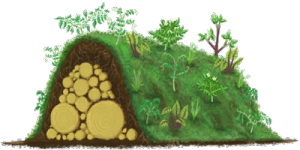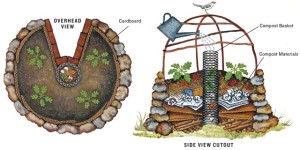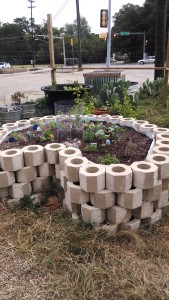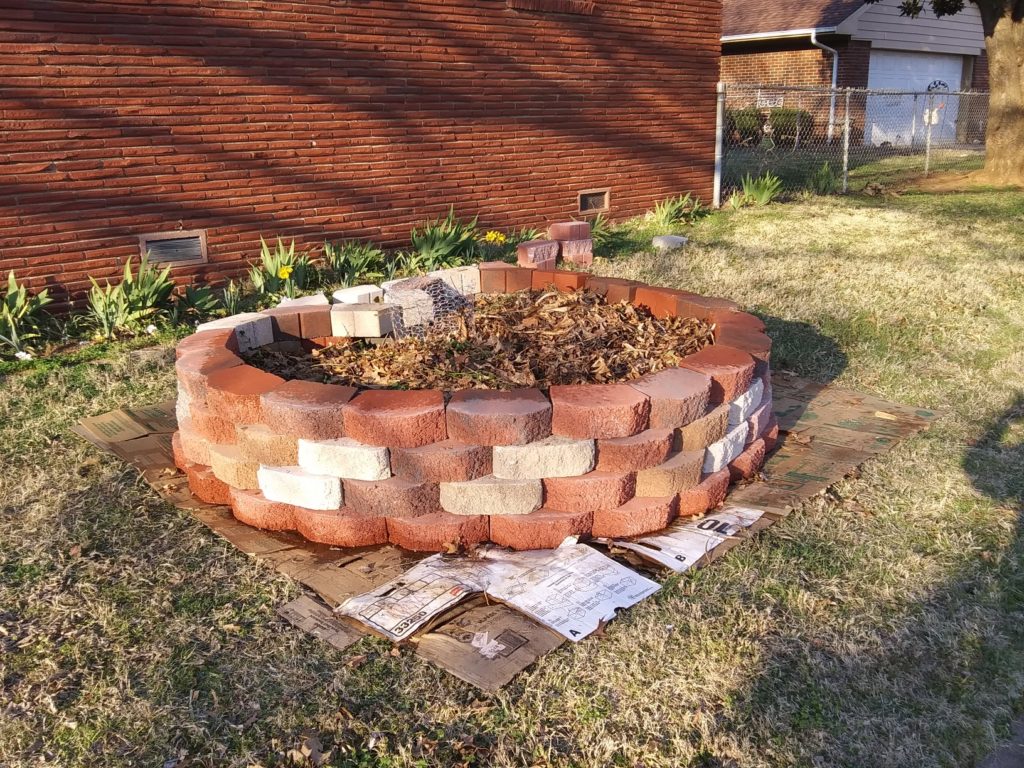
This week’s project was a keyhole garden. It is modeled after a design created several years ago by a nonprofit organization, Send a Cow, to help families in arid regions of Africa. The design is basically a raised bed with a compost pile in the middle. It holds water because of all the organic matter with which it is filled, and allows greater density of planting because of the richness of the soil.
I learned how to make raised bed keyhole gardens when I attended a workshop taught by Dr. Deb Tolman, an environmental scientist, and a strong advocate for this type of bed.
First, I accumulated 92 landscape blocks, the ones used to build retaining walls. They are more attractive than concrete blocks that can be used. However, this bed will be out in front of my house, so I want it to be attractive. Otherwise, concrete blocks can be painted for aesthetic purposes.
I had plenty of cardboard from boxes I’d used in moving. I removed tape, and burst them into single sheets. I then laid them in a roughly 8′ x 8′ square, with cardboard overlapping by 6″ and then doubled that thickness with another layer of cardboard. On the cardboard, I marked out a 6′ diameter circle, and started placing blocks around on the marks.
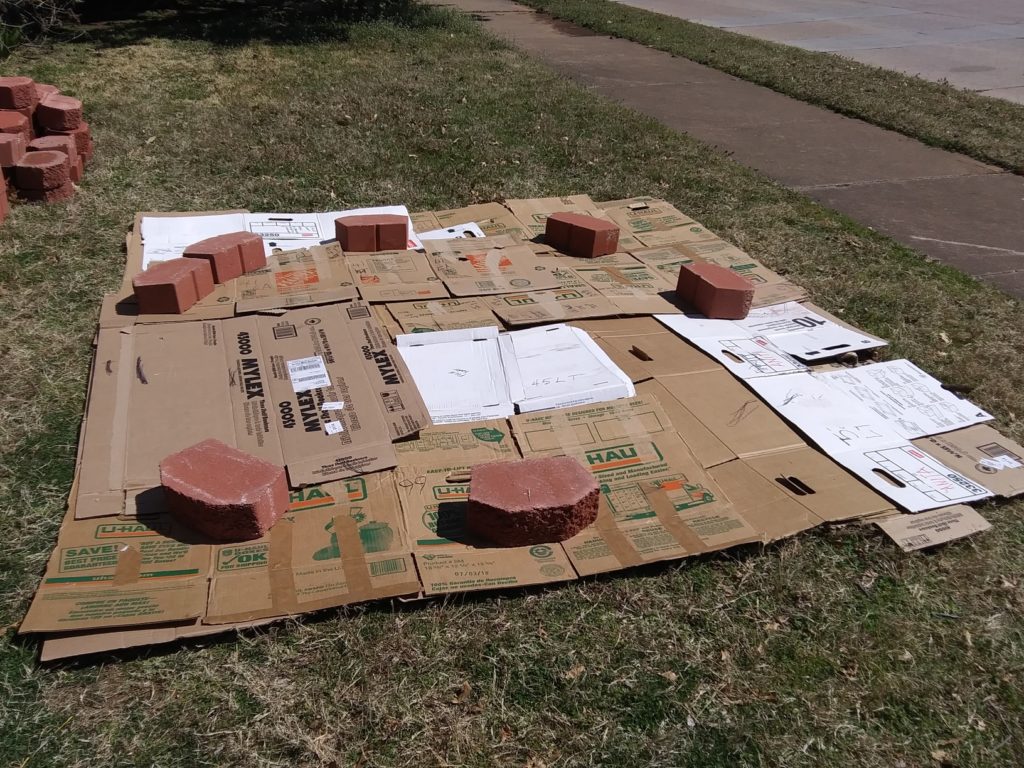
I adjusted the blocks around the circle, and aligned the “v” that makes it a keyhole.
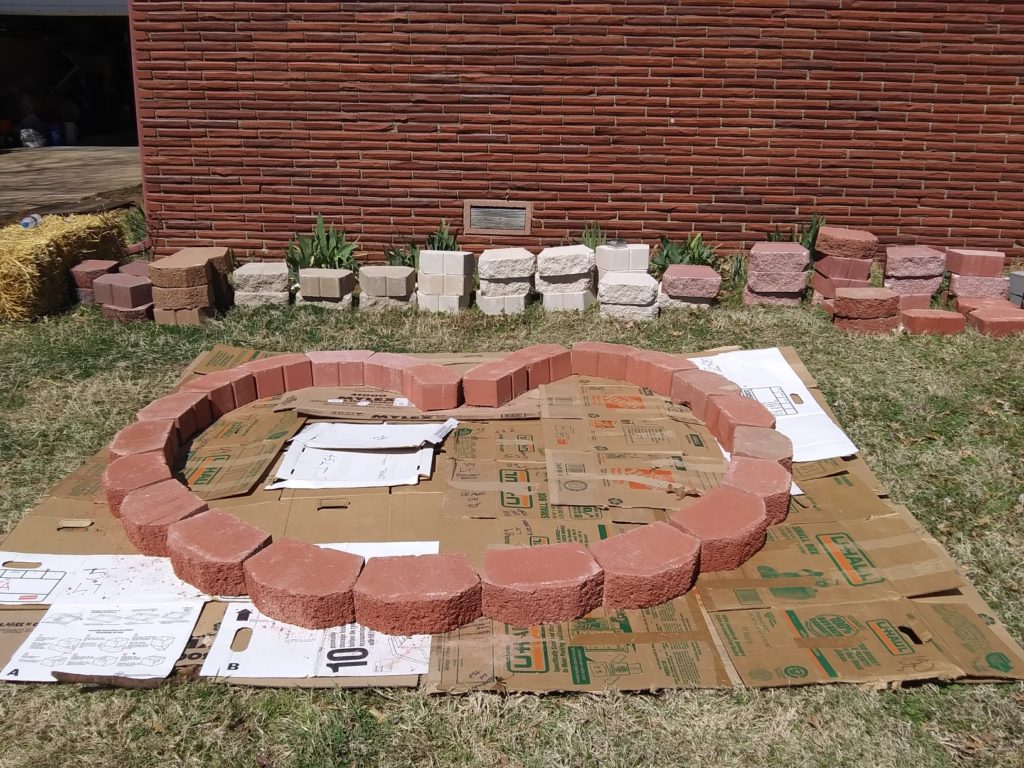
It is critical to layout the first round carefully, because all subsequent rounds are based on the base round. The second round is placed off-center block by block of the first round. The picture at the top of this blog post is the finished wall. Note that a cylinder of wire (chicken wire or hardware cloth) with a diameter of approximately 18″ is placed upright at the apex of the “V”. This wire cylinder is to contain compostable materials on an ongoing basis.
Watering is done through the cylinder once the garden is filled and planted. In this way, the water goes through the compost and out to the plant roots. The dimensions of the garden (maximum 6′ in diameter) is the maximum distance that the water will migrate out to the plants. Note also that the cylinder is at the center of the circle.
The garden is now being filled by (1) branches and cuttings from bushes on the property; (2) leaves collected from curbs in the neighborhood; (3) wood chips; (4) turf removed when I planted trees; (5) vegetable matter that my neighbor removed when cleaning out her flower beds; and (6) some compost. I will continue to fill the bed, letting rain pack down the contents, adding some dog hair from my folks’ dog brushings, more compost, more leaves, straw, wood chips, and finally a layer of compost and top soil to bring it ready to plant – projected around May 1.
Stay tuned for progress reports!

